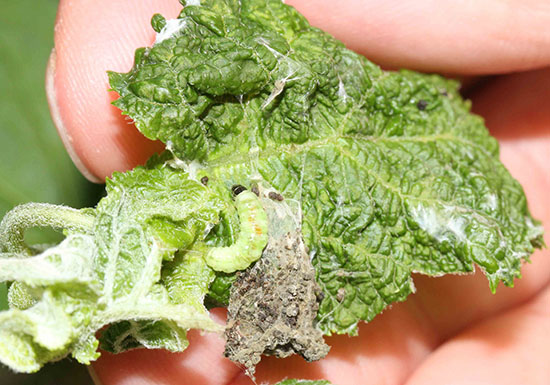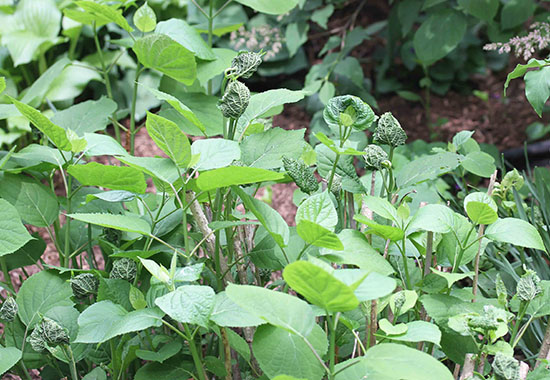Issue 3, May 19, 2014
Hydrangea Leaftier
Hydrangea leaftier, Olethreutes ferriferana, has been noticeable in central Illinois and is present in other areas of the state. Damage appears as two to four cupped leaves tied together with silk at the end of a branch. An attacked plant will typically have ten to twenty of these cupped leaf sets. Pulling the leaves apart reveals a slender greenish caterpillar up to one-half inch long with a blackish head.
This insect emerges in the spring as a small brown and white patterned moth. The white pattern somewhat resembles bird droppings, and thus provides camouflage from bird predation. Eggs are laid on the branch tips of various hydrangea species. Hatching caterpillars web the leaves together and feed on the enclosed flower bud and surrounding leaves. The larvae drop to the ground to pupate in summer to emerge as adult moths the following spring.

Hydrangea leaftier larva and damage.

Hydrangea leaftier damage overall.
Although the amount of damage is relatively minor, the cupped and tied leaves are aesthetically obvious as well as the reduced number of blossoms. Control can be achieved by opening the leaf pouch and smashing the caterpillar inside or by removing and destroying infested leaf masses. Forcefully spraying the cupped leaves with a single application of Bacillus thuringiensis kurstaki (Dipel, Thuricide, others) or a labeled pyrethroid will also be effective. (Phil Nixon)
Author:
Phil Nixon